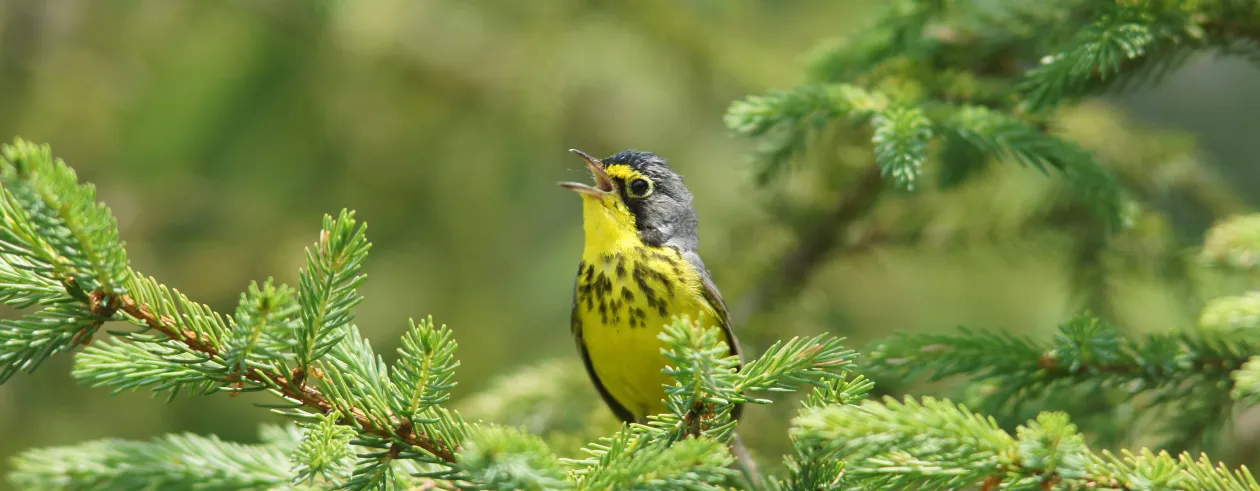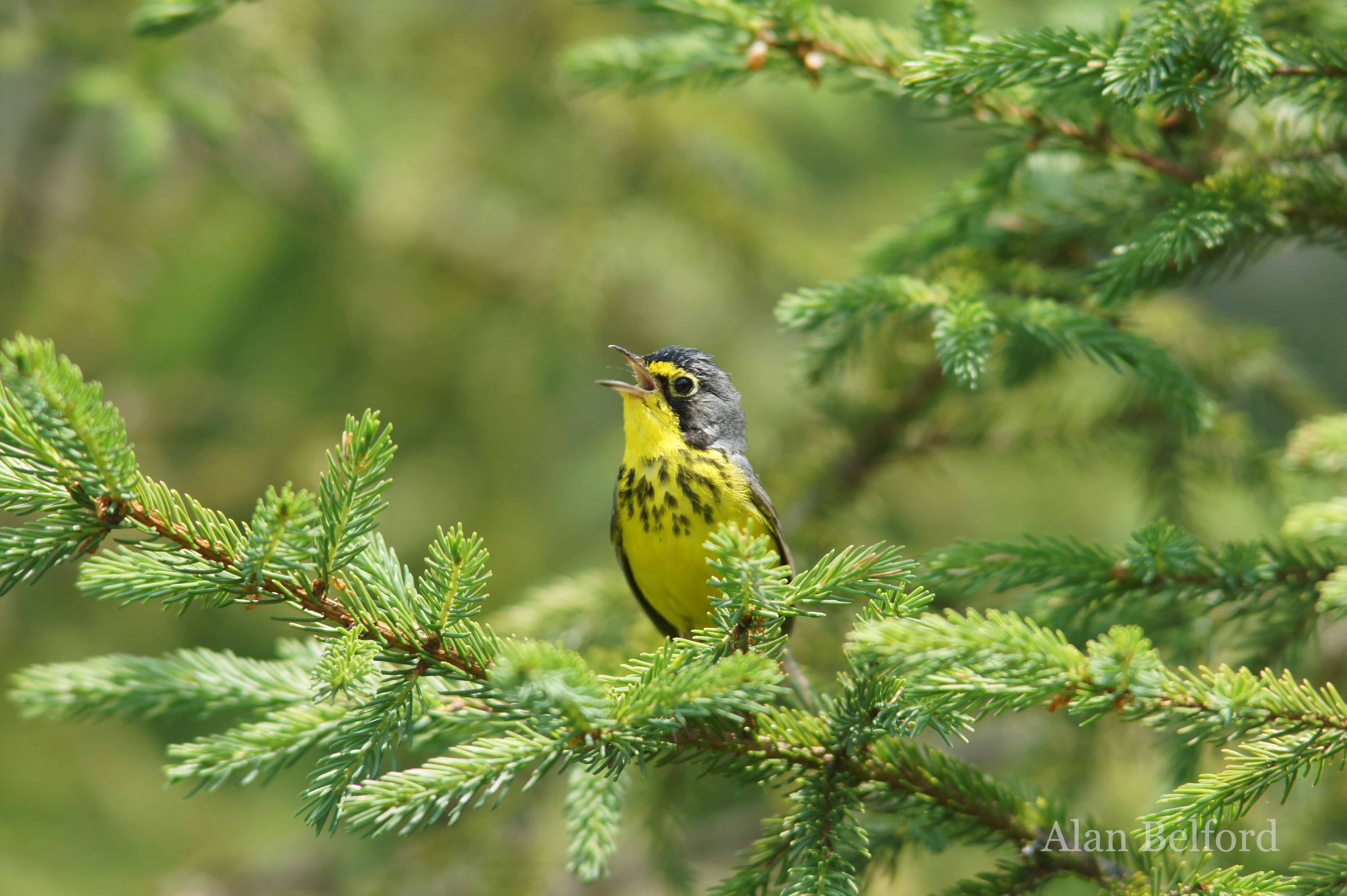
So many places to go!
I love the collection of birding locations south of Tupper Lake in the southeast corner of St. Lawrence County – a conglomeration of sites which presents birders with plenty of opportunities to explore. The habitats seem to radiate from Horseshoe Lake (a nice place to paddle and investigate in its own right), with access to Lows Lower Dam and the Bog River, Hitchins Bog along a set of defunct railroad tracks, and the trail into Lows Upper Dam, which runs along the northwest side of Hitchins Bog. It means that each time I visit that area of the Adirondacks is a little different than the last – a sure way to discover new things.
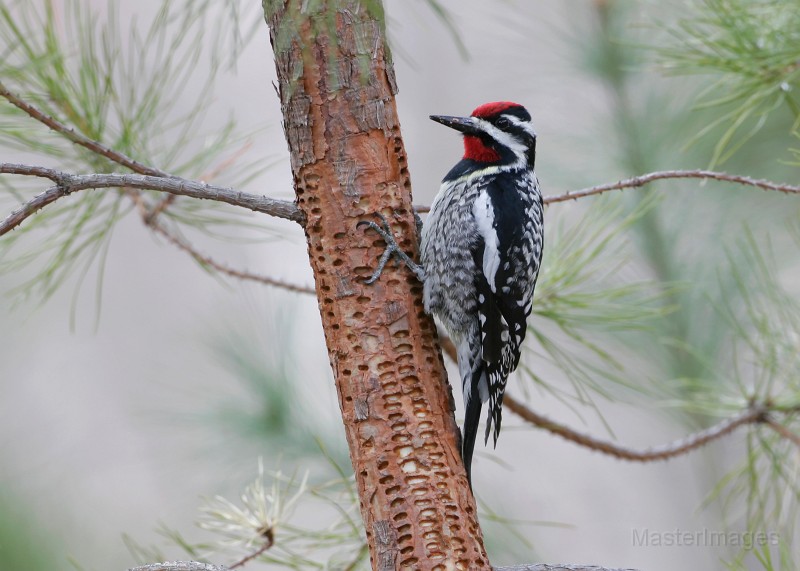
A summer visit
A recent trip there found me beginning at Tupper Lake Marsh on Route 30, scanning for herons, bitterns, ducks, and a variety of songbirds before I drove south toward Horseshoe Lake on Route 421 in order to walk the trail toward Lows Upper Dam, which sits where the Bog River flows into Hitchins Pond.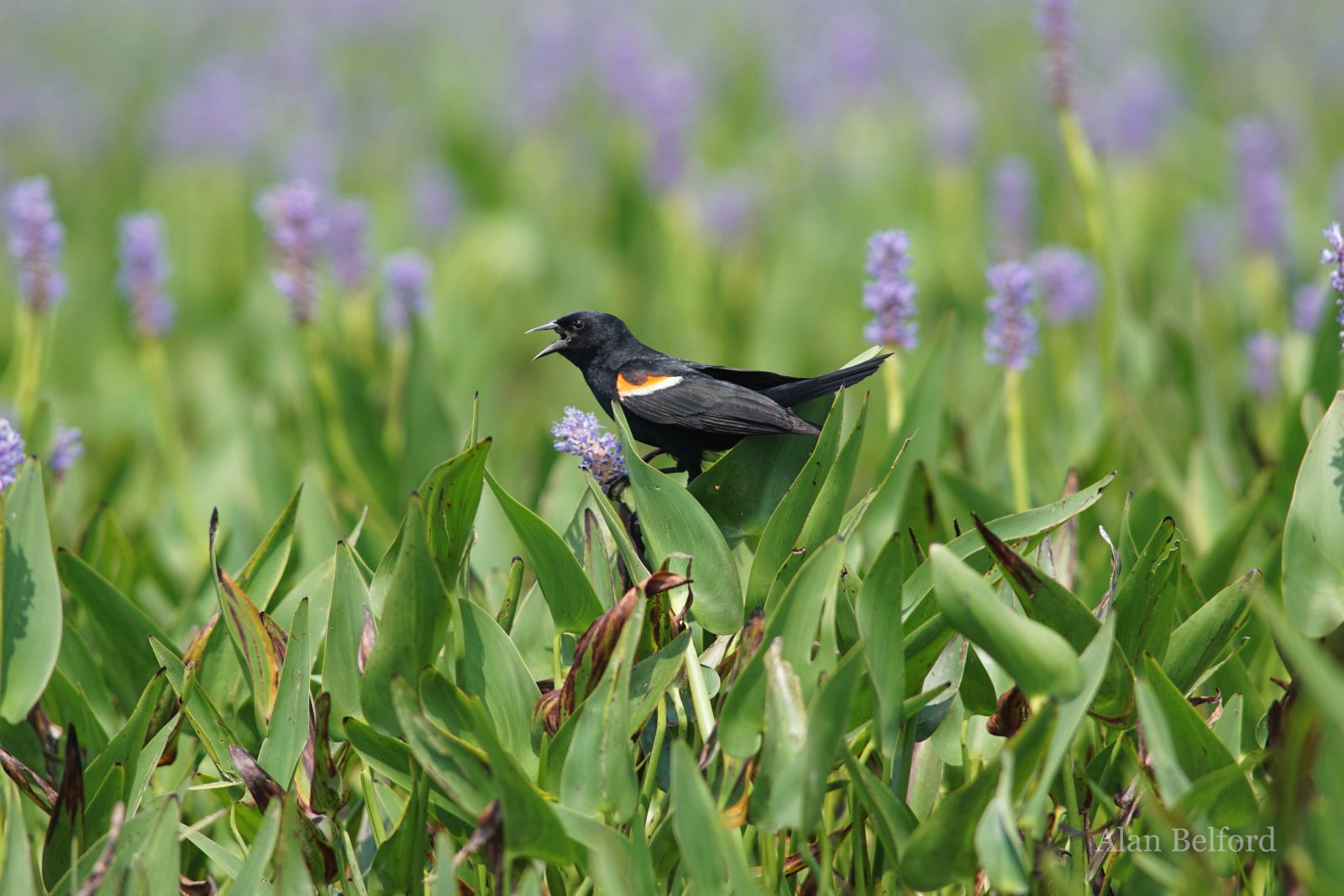
The birding is great all along the road on the way to the hike itself, and I began to amass a list which included chattering Belted Kingfishers, singing Blue-headed and Red-eyed Vireos, and Wild Turkeys which foraged with their chicks in the grasses along the road. Last year Wren and I found a family of Barred Owls along the road when we camped in the vicinity.
The habitat along the road becomes particularly interesting once you leave Horseshoe Lake, and I parked off the road and readied myself for my hike south. As if I needed any reminding to be prepared for biting insects, the mosquitoes hummed around the closed car windows in anticipation of my disembarking, and I covered up all of my exposed skin to be ready for them. Ravenous insects or not, the birding along the trail (really an easily-walked dirt road) can be great, but anyone going there should be ready for bugs. That said, while the mosquitoes were initially menacing, their attacks weakened considerably as the day warmed and the sun climbed in the sky, and the coming weeks of summer should see fewer and fewer of them.
Lots of birds
While I was swatting mosquitoes, I was also soon tallying birds, beginning with my first of several Yellow-bellied Flycatchers, which called from the thick stands of balsam fir which lined the road. A Canada Warbler sang from the thickets along a small wetland (there are always Canadas there!), while my list grew with my first Hermit Thrushes, Cedar Waxwings, Yellow-bellied Sapsuckers, and Winter Wrens of the hike.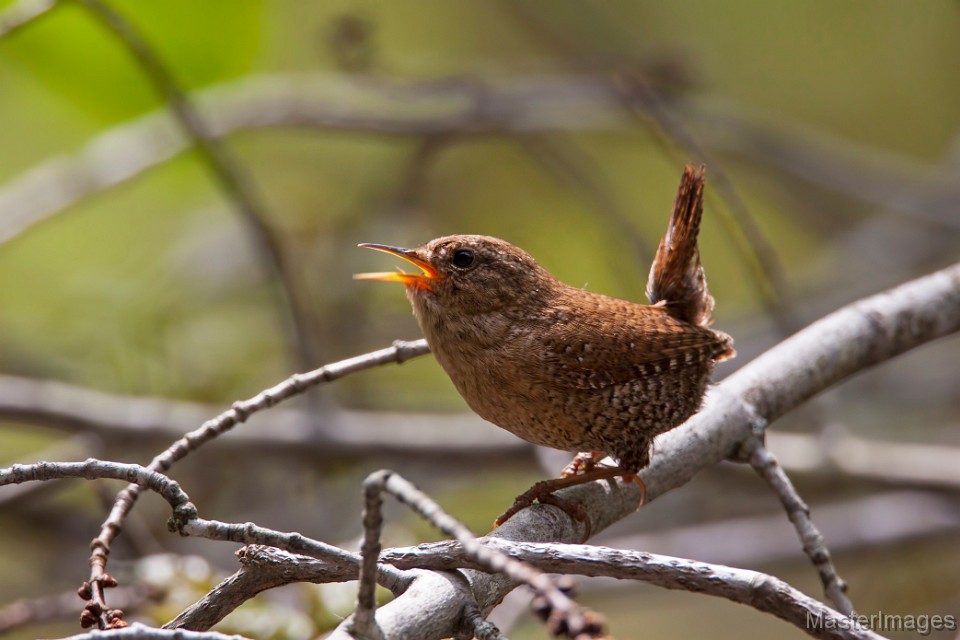
I was pausing to listen to the long, complicated song of the Winter Wren when I noticed the pip, pip, pip of an Olive-sided Flycatcher – calling in the direction of the snags along the border of Hitchins Bog. While I couldn’t find an angle through the trees to see the flycatcher, its calls were followed by the flight notes of a pair of Red Crossbills which I saw dip and undulate overhead as they flew this way and that. I encountered a few pairs of Red Crossbills during my hike and it was difficult to say how many birds there were in total – they move around a lot.
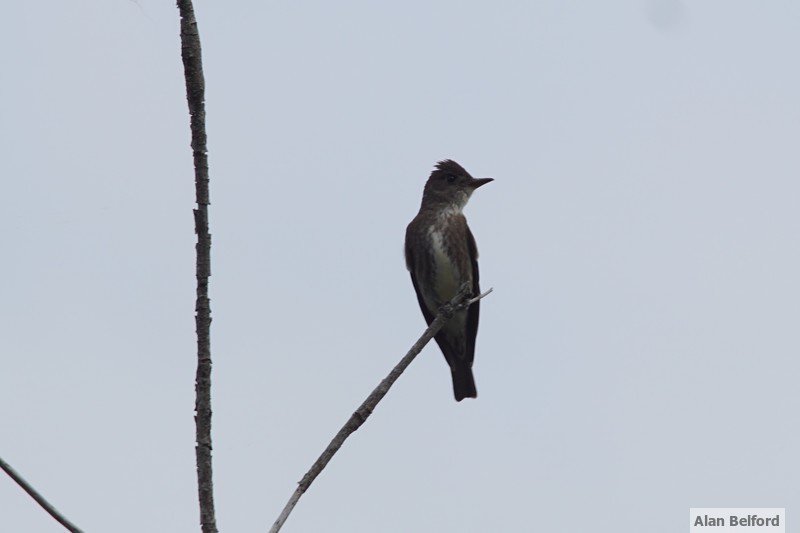
This hike is known for such boreal species, and in fact, it is one of the major reasons why folks like me explore there. But the trail also harbors a diversity of other species, thanks to the variety of habitats it traverses. Chief among these, as with so many Adirondack haunts, may be the warblers and I soon had found conifer-loving species like Nashville and Magnolia, as well as Black-throated Blue and Blackburnian in the more deciduous or mixed forests along the way. These same habitats also offered a few Ovenbirds as well as a Scarlet Tanager, the latter giving raspy calls from the woods.
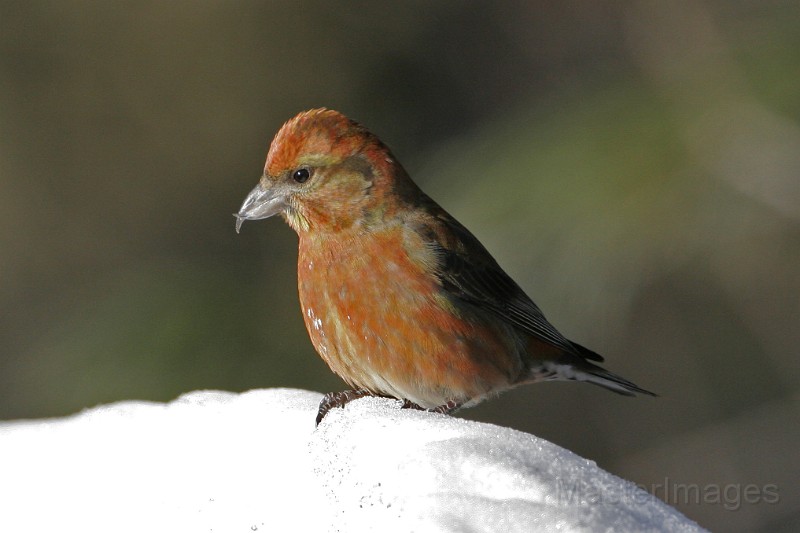
Having walked past the yellow DEC gate which blocks anyone from driving into the dam itself, I wound my way along the northwest edge of Hitchins Bog, where I was once again surrounded by boreal habitat and good numbers of Palm Warblers and Lincoln’s Sparrows to show for it. The bog mat also hosted an Eastern Bluebird; open bogs often act as suitable replacements to their preferred fields. Common Yellowthroats, White-throated Sparrows, and Swamp Sparrows sang and called from across the wetland, and I paused to drink in the sight of the sun piercing through the wet and drippy morning on the bog mat.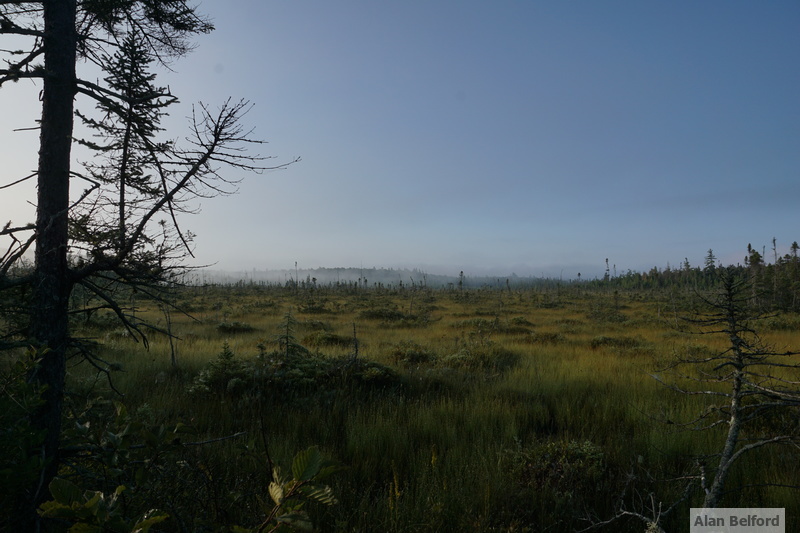
From the bog itself, the trail turns into more deciduous and mixed habitat, and I followed it for a spell - continuing to add birds and species to my list. But I eventually turned around in favor of another pass along the bog mat and its potential for boreal species, finally winding my way back past the yellow gate and to the road.
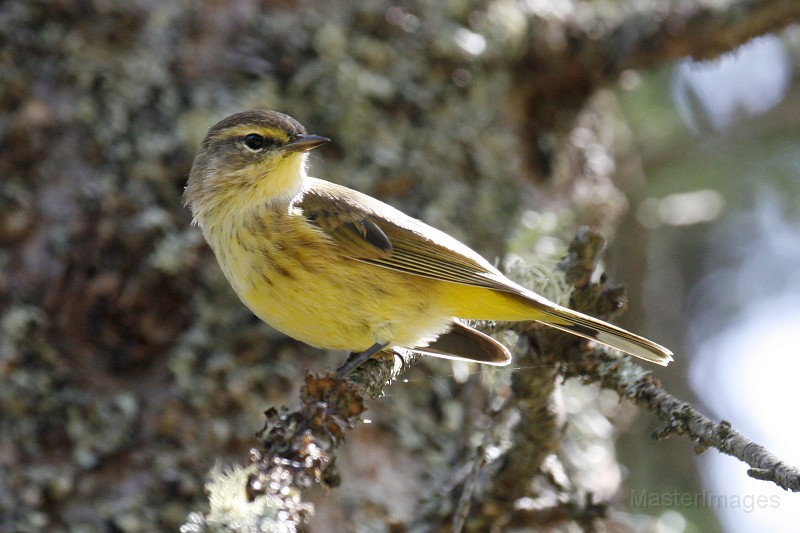
Once back at the car I elected to drive for a spell further out along the dirt road, which eventually leads (miles later) to Massawepie. I added a cooperative Broad-winged Hawk, a White-breasted Nuthatch, and a Brown Creeper in this way, finally deciding to reverse field and head back to Route 30. From there — still not done exploring — I turned south toward Little Tupper Lake (another place I check out whenever I’m in the neighborhood), finally ending my birding in Long Lake where a slew of Wood Ducks covered Shaw Pond in the afternoon.
Late summer and early fall birding and outdoor exploration in the Adirondacks is great! Plan your trip today and check out our lodging and dining pages to learn more!
This week in ADK news:
